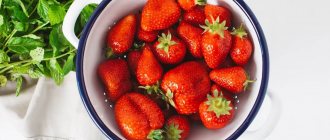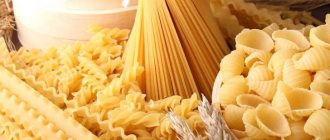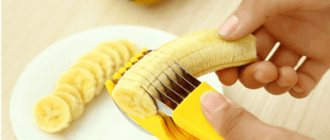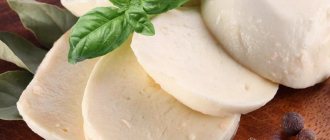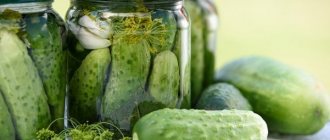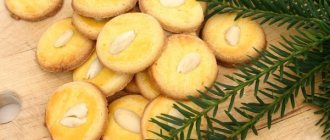Composition and calorie content of noodles
Glass noodles are made from mung bean starch. This member of the legume family is similar to green peas. Starch from other plant crops can also be used: manufacturers often began to use rice and potatoes. The taste depends on what the product is made from. The taste of these noodles is not very pronounced.
The advantage of this side dish is the absence of gluten, which makes the noodles safe for people with an allergic reaction to this substance. When consumed, there is no sharp jump in glucose, which is an advantage for patients with diabetes. The product contains vitamins B1, B6, E. Microelements include zinc, calcium, selenium, iron, magnesium and phosphorus.
Dry funchose contains from 360 to 320 kcal per 100 g. Boiled in 100 g of a dietary dish without additives it contains from 78 to 90 kcal. Of this, carbohydrates account for approximately 20 g. The amount of proteins and fats is small.
Composition of glass noodles
Funchoza consists of 75% starch from various cultivated plants. That is why its nutritional value is high. Asian vermicelli contains:
- B vitamins - they take part in controlling the state of the nervous system;
- vitamin E - its antioxidant properties prolong youth, help in the process of tissue and cell regeneration;
- vitamin PP - necessary for normalizing cholesterol levels and hormone synthesis in the body;
- microelements - phosphorus, sodium, magnesium, potassium, calcium and others;
- alimentary fiber;
- minerals - manganese, zinc, copper;
- Saturated and unsaturated fatty acids are essential for the normal functioning of the brain.
Transparent noodles contain selenium and iron, which are useful for life. Selenium is the main substance in the production of thyroid hormones; it helps enhance male potency and protects the body from infections. Lack of iron can lead to anemia, weakening the oxygen supply to tissues and organs. Regular consumption of funchose saturates the body with this compound. Fiber in glass noodles improves digestion, helps maintain the elasticity of blood vessels and takes part in cleansing the body of harmful compounds, waste and toxins.
Important!
The listed components in the composition of funchose refer to a high-quality traditional recipe for making vermicelli without harmful additives to reduce the cost of the product and improve its appearance.
The main advantage of glass noodles is the absence of gluten. This type of protein is found in cereals (rye, wheat, barley, rice) and can lead to disruption of the digestive system. Thanks to the gluten-free composition, pasta dishes do not cause allergic reactions.
The calorie content of starch noodles is high: 320 kcal per 100 g of dry product. But during heat treatment, the product absorbs liquid, becomes saturated with water, and the calorie content per 100 g is only 87-90 kcal. This allows the oriental dish to be considered dietary and help with weight loss.
Useful properties of funchose
The oriental dish is easily digestible and does not overload the digestive system. The internal tone of the gastrointestinal tract improves: noodles stimulate the functioning of the stomach and intestinal motility. Promotes the removal of toxins, toxic, poisonous substances from the body. With regular use, it helps to normalize the water-salt balance of the body. Stimulates metabolic processes, accelerates metabolism. Even a small portion is enough to satiate you, because the complex carbohydrates included in the composition take a long time to break down in the intestines.
The process of cell renewal accelerates, which has a positive effect on the condition of the skin. The skin becomes smoother, more elastic, and turgor improves. Funchose is also useful for nails and hair.
Good for diabetics. The product has a low glycemic index, so it has almost no effect on blood glucose levels. Noodles provide vitamins and minerals and help improve your mood. Reduces the risk of developing thrombophlebitis, reduces the likelihood of hemorrhage in the heart and brain, and prevents the appearance of diabetic foot.
The development of cancer is slowed down. Noodles slow down the loss of visual acuity. In men, it prevents a decrease in potency. Helps strengthen the skeleton.
There is little cholesterol in the dish. Atherosclerotic plaques do not form. This makes such food safe for hypertension. Red blood cells carry oxygen better and supply body tissues with this gas.
Pregnancy, lactation, and childhood are not contraindications for eating funchose. It is better, however, to abandon traditional sauces, since they are high in calories, contain a large number of components, and can cause unwanted reactions.
Only original funchose, which does not contain foreign impurities, will bring benefits. It is necessary to carefully check the composition before purchasing. In addition, if possible, you should inspect the noodles themselves. It shouldn't be sticky. Good glass noodles are fragile and break without effort. There is no smell. It is better to take a dry product to prepare yourself, since store-bought salads are often seasoned with a large amount of oil, which is why they become excessively high in calories.
Mechanism of weight loss
If you replace some of the other side dishes with funchose, the daily calorie content will decrease. The dish has a neutral taste and goes well with other dietary products: meat, fish, seafood, vegetables or mushrooms. Slow carbohydrates take a long time to break down, providing a long-lasting feeling of fullness.
Useful for losing weight and cleansing the body, removing toxins that slow down metabolism. When internal organs are cleansed of harmful substances, metabolic processes accelerate.
Cooking rules
When cooking, you need to follow several rules so that the dish remains low-calorie, useful for losing weight. First, soak the noodles in water at room temperature for 5-10 minutes. This will speed up the cooking process and help preserve the beneficial properties of funchose. Then you should throw the product into water that has been previously brought to a boil and boil for 4 minutes. There is no need to salt the water. Then the water is drained. There is no need to rinse the noodles. When cooked correctly, the dish should become transparent.
Can be served both hot and cold. It is recommended to eat it in the first half of the day so that carbohydrates have time to be completely broken down.
Benefits for the human body
Glass noodles are gluten-free (a protein found in wheat), which makes them a valuable product. Many people develop gluten intolerance after 50 years of age; people with celiac disease should not consume this protein either.
Other beneficial properties of funchose:
• is a source of complex carbohydrates; • helps maintain healthy and youthful skin, contains the necessary mineral salts; • strengthens the nervous system thanks to B vitamins; • helps reduce the amount of sugar and fat in the diet, providing sufficient energy to muscle tissue. After dishes with funchose, you don’t feel like eating for a long time; noodles are nutritious, bring a boost of energy and improve your mood, and therefore are often used in menus for weight loss.
Types of funchose
There are several varieties of dietary dishes, differing in the product from which they were made.
Rice
Rice noodles are sold in stores more often than other varieties. Made from fine flour. Wild brown rice is used for production, which allows you to preserve most of the nutrients.
Bean
This cooking option appeared earlier than the use of rice. Asian mung beans were used for the dish. The cost of bean noodles is higher, so sweet potatoes are often added to them, which makes the product cheaper.
Potato
Funchose is not prepared from pure potato starch. Manufacturers may, however, add potato starch to rice flour to reduce the cost of the product. This increases calorie content. The quality of the product also becomes worse, and some of the beneficial properties are lost. It is recommended to carefully study the composition and avoid products containing potato or corn starch.
Funchoza - what is it?
In China and Japan, they know well what funchose, or glass noodles, are, because here they are a traditional dish. In Russia it is sometimes called rice noodles.
It looks transparent, has no specific taste or smell, but easily takes on the aroma of the products it is cooked with.
These noodles are actually made from beans. The bean starch is extracted, the mixture for the base is prepared, the funchose is rolled into the thinnest sheets and cut into pieces. The Chinese and Japanese use glass noodles to create many dishes. It takes on the aromas and tastes of what it is flavored with or where it is added, and is the basis of various recipes.
Diet on funchose
The diet is designed for 5 days. During this time, if you follow a diet, you can lose from 3 to 5 kg of excess weight. It is necessary to consume at least 2 liters of clean water, green tea or herbal infusions daily. Nutritionists recommend repeating it no more than once every 3 months, so as not to harm your health.
Day 1. Breakfast: salad with funchose and fresh cucumber, a slice of rye bread. Lunch: boiled or baked lean fish with rice noodles. Dinner: fresh vegetable salad.
Day 2. Breakfast: natural grapefruit or orange juice, 2 kiwis. Lunch: boiled chicken fillet, funchose, carrot salad, dressed with a small amount of olive oil. Dinner: cottage cheese, a glass of low-fat kefir.
Day 3. Breakfast: 1–2 slices of hard cheese, funchose. Lunch: bean noodles, 2 soft-boiled eggs. Dinner: fresh cucumbers, water with lemon juice.
Day 4. Breakfast: 2 small oranges or grapefruit. Lunch: funchose with boiled fish, fish broth. Dinner: fresh, low-sugar fruit.
Day 5. Breakfast: funchose, pureed vegetable soup. Lunch: glass noodles, grilled chicken breast. Dinner: tea with a spoon of honey.
1 serving should not exceed 300 g. Among drinks, in addition to pure water, unsweetened green and herbal teas, natural juices, fruit drinks, compotes, coffee without sugar and milk are allowed. If following a diet is too difficult, snacks are allowed: unsweetened fresh fruits, fresh vegetables, natural yogurt or low-fat kefir.
For diseases of the gastrointestinal tract, during pregnancy, lactation, and in childhood, this weight loss system is not used.
Recipes with funchose for weight loss
There are a large number of dietary recipes that will help diversify the menu on proper nutrition.
To prepare soup with funchose you will need:
- 100 g boiled funchose,
- 300 g broccoli,
- 50 g sweet pepper,
- 20 g walnuts,
- salt, soy sauce.
Boil broccoli and puree using a blender or fork. Add nuts and blend again. Boil over low heat for 5 minutes. Add diced bell pepper and funchose. Boil for 2-3 minutes. Season with soy sauce, leave for a few minutes under a closed lid.
To prepare a spicy roast of funchose with chicken and vegetables , you need to take:
- 150 g glass noodles,
- 300 g chicken wings,
- 250 g vegetable mixture,
- 250 ml vegetable broth,
- chili pepper, salt, spices.
Fry the chicken until golden brown in a small amount of olive oil. Add hot pepper, vegetable mixture and simmer for another 5 minutes. Pour in dry funchose and pour in broth. Add spices. Simmer over low heat until the liquid has completely evaporated.
prepare shrimp paste from:
- 150 g funchose,
- 250 g pre-peeled boiled shrimp,
- 50 ml cream 20%,
- 50 g parmesan.
Fry the shrimp until golden brown in a drop of olive oil. Place evenly on a baking sheet, cover with funchose on top, pour in cream. Grate Parmesan on a fine grater, sprinkle the contents of the baking sheet on top and place in the oven preheated to +200°C for 7 minutes.
Funchose with vegetables and boiled turkey breast will also be delicious . Required:
- 230 g glass noodles,
- 700 g turkey breast,
- large onion,
- 1 tbsp. olive oil,
- 2 tbsp. soy sauce,
- 1 medium sized carrot
- 2 cloves of garlic,
- salt, black pepper, paprika.
Boil the meat. Slice. Chop the vegetables. Fry the fillet in a drop of oil or simmer in a small amount of water (it is better to use water when losing weight). Add spices and salt. Add onions, carrots. Boil the funchose. When the meat is almost ready, add garlic and soy sauce to it. Add funchose. Cook for another 5 minutes, stirring occasionally.
Nutrition for celiac disease
Since this disease is directly related to nutrition, it can only be brought under control through appropriate dietary adjustments. In this case, a strict gluten-free diet is indicated, but in compliance with the general principles of a balanced, proper diet.
It is advisable to eat at home - this will avoid the risk of accidentally introducing gluten-containing products into some dishes. Menu from public catering outlets is extremely rarely suitable for people with celiac disease, because even a small dose of gluten can cause unwanted reactions in the body. Now let's move on to the diet:
Allowed foods for celiac disease
- rice, millet, buckwheat, corn, quinoa, millet, amaranth;
- bread, pasta and baked goods made from soy, buckwheat, corn and rice flour;
- lean meats, poultry, fish, eggs (sources of animal protein);
- olive oil, butter, and non-toxic plant seed oils
- soups with weak meat or fish broth, possibly with the addition of permitted cereals;
- vegetables: carrots, potatoes, zucchini, cauliflower, pumpkin, salads;
- fruits and berries, as well as compotes, jelly, mousses, juices, jelly, jam, marmalade, marshmallows and pastilles made from them;
- dairy products: cottage cheese, kefir, fermented baked milk, pudding, natural yogurt, mild cheese (in the absence of lactose intolerance);
- homemade sauces and natural seasonings;
- nuts, seeds, dried fruits;
- herbal and fruit tea, weak coffee, rosehip decoction, homemade juices, purified water;
- specialty gluten-free products sold in diet departments.
Foods that should be limited during an exacerbation of celiac disease
- pieces of meat and poultry;
- fatty fish;
- eggs (1-2 per day);
- oatmeal and porridge made from it (only if there is no intolerance, in small quantities);
- dairy products: sour cream, kefir, milk and cream;
- ripe tomatoes, onions, garlic;
- weak alcoholic drinks;
- whole fruits and berries (cook pureed).
Contraindications
Funchose itself has almost no contraindications. This product is not suitable only for people who have an individual intolerance to the raw materials from which glass noodles are made. Often the composition contains foreign impurities, due to which the products can negatively affect human health.
The presence of chemical additives and rice starch makes the dish dangerous for patients with diabetes.
If you have intestinal obstruction or a tendency to constipation, it is better to avoid eating varieties with corn starch.
Unscrupulous manufacturers bleach the product with lead. For this reason, it is better not to take funchose from an unverified supplier; buy it only in large stores, where each product has documents. Lead can cause severe poisoning, sometimes death.
Funchose will cause harm if consumed daily. This carbohydrate dish should be alternated with cereals and durum wheat pasta. Too large portions can cause weight gain. Excessive consumption can also lead to a lack of desire to eat any food after a hearty meal. This will lead to a deficiency of proteins, fats, vitamins and minerals, which will negatively affect your health.
general information
For reference. Funchoza is an oriental dish made from glass noodles with seasonings and vegetables. Used both hot and cold. Served with mushrooms or meat. Noodles are made from the starch of mung beans (more commonly known as mung beans). After cooking it becomes almost transparent.
Is it possible to eat funchose while losing weight? On the one hand, it looks like pasta. On the other hand, it is prepared using a special technology, from green beans, so it is considered a healthy product. Moreover, information about calorie content varies - it is not clear whether it is dietary or not. In fact, all these doubts can be resolved if you carefully study the nutritional value and chemical composition of glass noodles.
The nutritional value:
The uniqueness of glass noodles is that when cooked they lose their calorie content and become a dietary product. This allows you to eat funchose while losing weight, without fear that it will not fit into a particular diet.
The rich chemical composition will prevent depletion of the body:
- vitamins B1, B2, B3, B5, B6, B9;
- micro- and macroelements: starting with iron and ending with selenium.
The absence of gluten, which is found in most traditional pasta, guarantees that no allergic reactions will occur. With such a composition and nutritional value, there should be no doubt whether funchose can be eaten or not. The main thing is to follow the recommendations of nutritionists.
This is interesting. In Russia, bean noodles are often called rice noodles. However, the latter is made not from beans, but from rice flour and after cooking it becomes white, not transparent.
Reviews
Alena, 28 years old, Saratov: “I decided to try the funchose diet because I love Asian cuisine. I wanted to lose some weight before my birthday. The advantage of the diet is the absence of hunger. In addition, there are many different foods in the diet, so weakness does not occur, hair does not fall out, and the skin does not become dry. I managed to lose 4.5 kg. Since I had a lot of energy left, I combined weight loss with training. I recommend",.
Maria, 36 years old, Penza: “I eat funchose 1-2 times a week: I replaced the usual pasta with such noodles. The product satisfies well, even after a small portion you don’t want to eat for a long time. I season it with soy sauce: it turns out delicious and not too high in calories.”
Dmitry, 33 years old, Moscow: “My wife and I decided to lose a little weight for the beach season. First we tried a diet based on funchose. She managed without snacks; in between meals she ate apples or drank kefir. Then they replaced some of the side dishes with funchose. I lost 3 kg during the diet, and after another 3 months lost 8. My wife managed to lose 5 kg during the diet, and in the next 3 months she lost another 13. Effective and tasty.”





